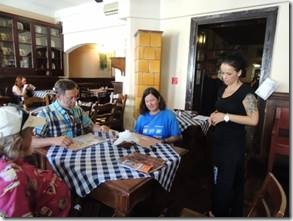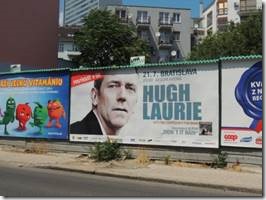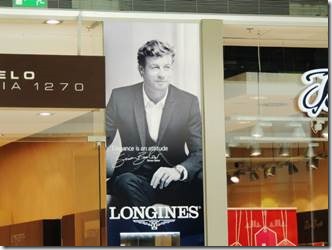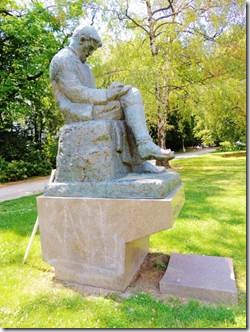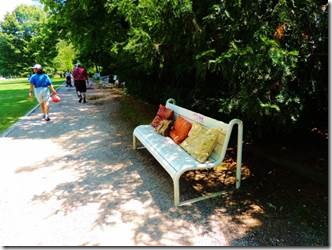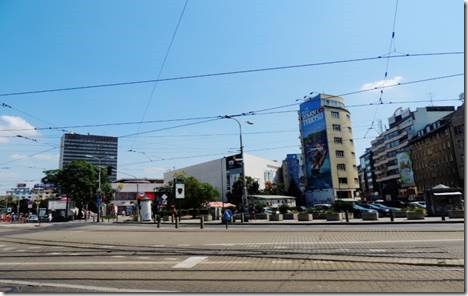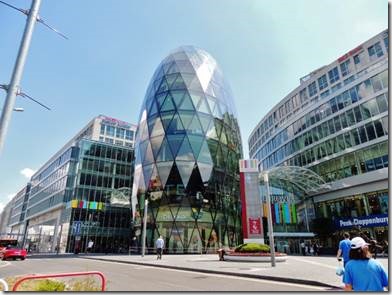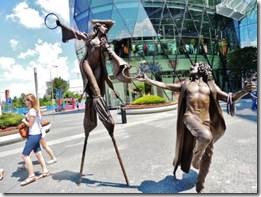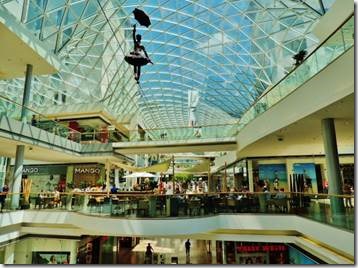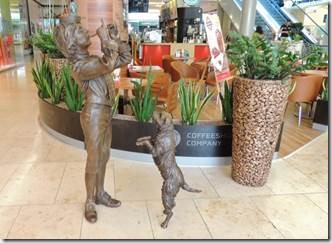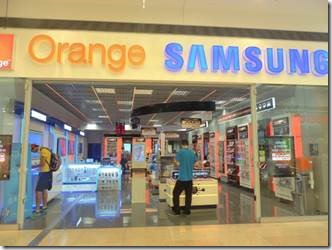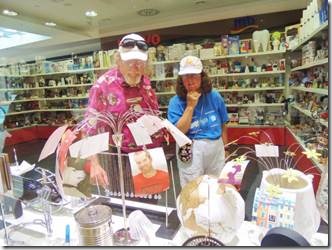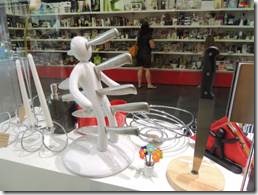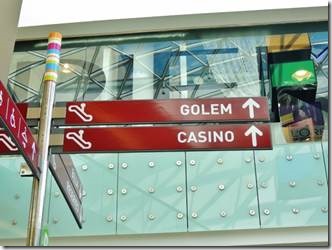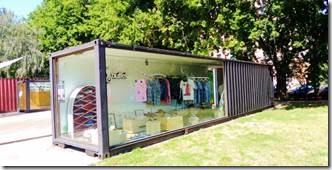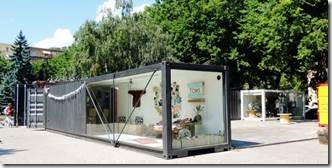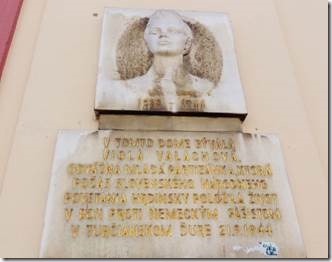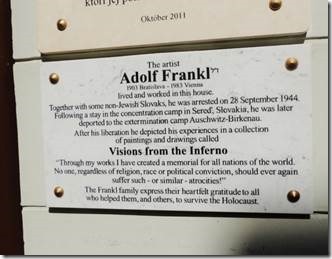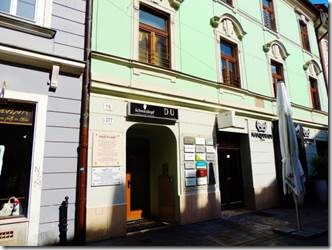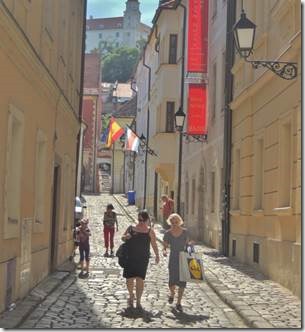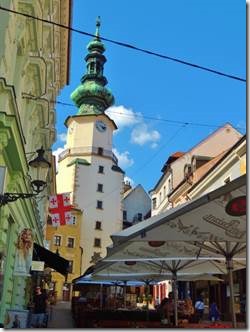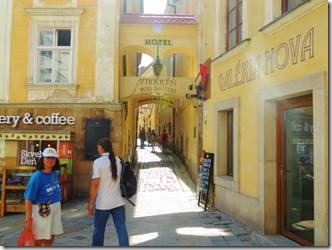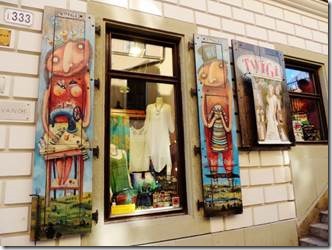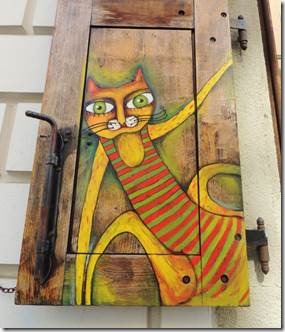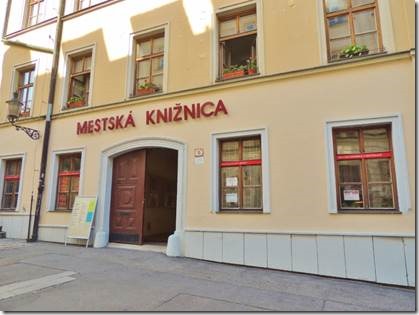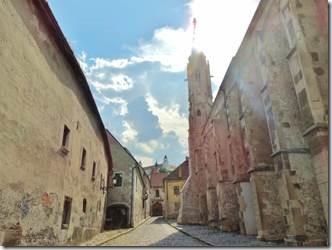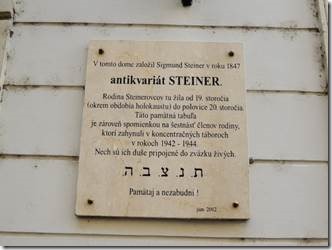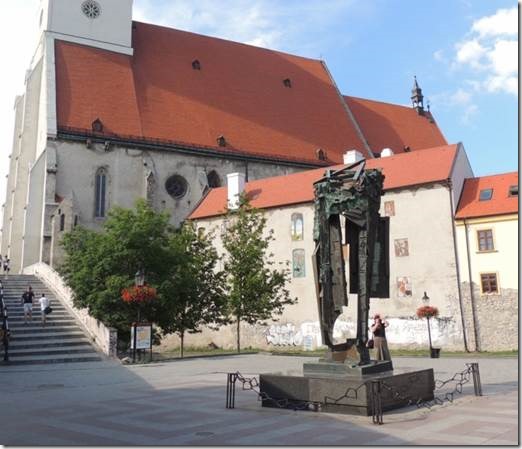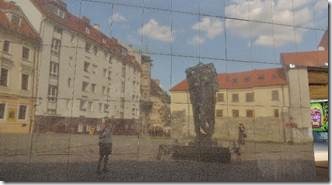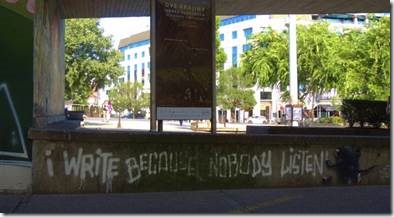Wiking Yacht Club, Budapest
Jó estét
It is just about 10 PM and after several long days of touring around Budapest, I’m tired! Mary and Rick have been here twice before so can zip around everywhere acting as great tour guides. Same in Vienna and Bratislava and pretty much everywhere we’ve been and will go.
I’ve been reading up about Bratislava, a city I really liked a lot. I’m learning a bit and sadly, seeing what we missed. Unlike London where I could return to sites after reading what I’d missed, can’t do that along this river trip. But so it goes. I am learning how little I know about European history post WW2.
This email finishes up Bratislava. Next email will be about Komarno, our other stop in Slovakia.
Ru
|
http://company.kofola..cz/26-beverages.html “The university side of town where we went hunting for a wifi sim card… we went stopped in for a drink. The origins of Kofola date from the late nineteen-fifties when the top politicians in the then Czechoslovakia demanded that a non-alcoholic beverage be developed and produced as an alternative to the unavailable western brands of Coca-Cola or Pepsi.” I had mineral water but maybe I’ll find some as we travel along to taste. |
|
House and the Mentalist though I liked Simon Baker better in The Guardian |
|
Medical Garden “Public park near the centre of the Old Town, behind the offices of the Dean of the Faculty of Medicine of Comenius University.” Statue of a man reading was all I knew until I looked him up “Martin Kukučín (real name Matej Bencúr, 17 May 1860 – 21 May 1928) was a Slovak prose writer, dramatist and publicist. He was the most notable representative of Slovak literary realism, and is considered one of the founders of modern Slovak prose.” By training he was a medical doctor. http://en.wikipedia.org/wiki/Martin_Kuku%C4%8D%C3%ADn I’m embarrassed to say I was fooled by these sculpted pillows; I had to walk back and feel them. |
|
Mall built during the time of Soviet control “Soviet Troop Withdrawal from Czechoslovakia Begins ONDREJ HEJMA, Associated Press Feb. 26, 1990 12:06 PM ET FRENSTAT, CZECHOSLOVAKIA FRENSTAT, Czechoslovakia (AP) _ Twenty-two Soviet tanks left this northern Moravian city today, beginning the Red Army’s withdrawal from Czechoslovakia nearly 22 years after Moscow sent troops to crush ”Prague Spring” reforms.” Slovakia: life after the velvet divorce “Why the former Czechoslovakian state, which gained its “Velvet Divorce” from the Czech Republic in 1993, is one of Europe’s quiet successes.” http://www.newstatesman.com/politics/2014/03/slovakia-life-after-velvet-divorce EUROVEA Mall (with a mini-Gherkin style building) Circus performer statues The dancing dog was my favorite |
|
The Euro Mall was the only source for Internet SIM cards This shop sold “creative housewares” like this knife holder Randal just loved. Though a Golem starts as a shapeless mass, this Golem is the name of a fitness center…so you won’t be a shapeless mass. |
|
Containers modified to become pop-uo shops http://popupcontainers.co.uk/ is an article about a company that does container conversions. |
|
1923-1944 Viola Valachová partisan. There were so many plaques with dates during WW2 or the early 50: wish they had been in English so I could have learned about the personal histories of people. Valachová Viola (* 1928 – † 21 September 1944 ) was a Slovak Partizanka . She lived in a house on Tobrucka street. 2 in Bratislava in Old Town . According to a plaque on the house, it was "courageous young Partizanka that during the Slovak National Uprising heroically put life in the struggle against German fascists in Turciansky Holy Ďur 21/09/1944 ". In her honor bears her name street in Bratislava Dubravka . http://translate.google.com/ |
|
Adolf Frankl (Czechoslovakia, 1903 – Austria, 1983) “I distribute paint on the canvas with my fingers, brush and palette knife, without any plan or model to follow. The ghosts crawl out of the darkness.” http://www.artforum.judenplatz.at/EN/worte_en.html http://www.artforum.judenplatz.at/EN/bildergalerie_en.html shows examples of his work “Born in Bratislava. He studied in the School of Applied Arts in Bratislava. After his studies he worked in interior design. In 1944, on Yom Kippur his family was transported to the Sered camp. His wife and two children escaped from the transport. In November 1944, he was transported to Auschwitz; received prisoner number B-14395. On January 18 1945, during the death march to Gleiwitz, he escaped to a forest and to the Althammer camp where he hid. In 1945, after his liberation he moved to Krakow and from there to Bratislava, where he was reunited with his family. In 1947, he had another son. The family moved to Vienna, where he later passed away.” http://www.yadvashem.org/yv/en/exhibitions/virtues_of_memory/frankl.asp |
|
A stroll around Old Town |
|
The Old Town features a rather bland mix of boutiques, galleries and souvenir and folklore shops. One standout is the Twigi boutique on Klariska Street, which is notable for its offbeat women’s clothing. Several shops offer good buys in Czech and Slovak crystal and glass, and there are some interesting used book and antique shops. http://www.nytimes.com/2004/06/16/style/16iht-trbrat_ed3_.html By Ruth Ellen Gruber Published: June 16, 2004 and the shop is still there. I loved the artwork on the shutters. |
|
The red signs say Bratislava City Library but I couldn’t find in when I went in thinking it seemed more like an apartment building now. And we were on our way to catch the bus back to the marina so I didn’t spend much time looking really. |
|
Unrestored bits of the Old Town |
|
http://www.antikvariatsteiner.sk/ Antikvariát STEINER was founded in 1847 and after more than 140 years in 1991 restored again. In addition, our older books antiquarian focuses on the old press, maps, graphics, and pictures pohľadice old and marginally on the sheet music. Successor of the bookshop in Ventúrska we try to Bratislava and remind visitors of our city. http://translate.google.com/ “False identification card issued to David Steiner under the name Jan Dudas by the Jewish underground. David Zigmund Steiner was the son of Wilhelm Zeev Steiner (b. Nov. 1, 1878, Bratislava) and Josy Jameson (b. June 25, 1884, London). He was born on June 24, 1926 in Bratislava and had one sister (Renee) Reline (b. 1922) in Bratislava. Wilhelm Steiner, originally from the small Moravian town Kojetin, had nine siblings. The family was Orthodox but had liberal tendencies. David’s father belonged to the local Free Masons; he spoke Latin with the local priests and German at home. He ran the family Antiquariat Book store which had been founded by his great grandfather Zigmund Steiner and was very well known. The family was well-off and owned several properties. They lived in the house that was connected to the bookstore and also owed a summer home bought by David’s grandparents known as the "Garden." David attended the Neolog elementary school and then began the German Gymnasium where 300 Jews studied. He also studied Jewish subjects privately and participated in the Bnei Akiva Zionist youth movement. On April 18, 1939 the independent Slovak government issued sweeping antisemitic legislation limiting the number of Jews in certain professions, though they also granted individual exemptions. On April 25, 1940 the Aryanization law was enacted providing for the liquidation of Jewish enterprises or their transfer to non Jewish owners. Jewish students were expelled from certain educational institutions. In 1939 at the age of 17 Reline Steiner acquired a certificate to immigrate to Palestine. She understood the gravity of the situation and hoped to leave Europe. Her father was not enthusiastic about the idea and preferred for her to go to England. Reline returned to Bratislava surrendering her certificate for Palestine. However, she never obtained a British work visa. In February and March 1942 deportations to Poland began, and all Jewish persons between 16 and 30 had to register. Reline tried to get a job as a seamstress in order to obtain a work permit from the Central Economy Bureau declaring that her work was essential. Such permits usually spared one from deportation. The request was denied. Reline managed to move to German Christian neighbors who were friends of the family. She took all of her clothes, books and belongings. However, at the end of March the registered young people were called up ostensibly for labor assignments somewhere in the Reich. Reline claimed she was not afraid of hard work, and she realized if she did not appear at the deportation site her parents might be called up. She was sent to the Patronka collection camp which was run by the Hlinka Guard and then deported to Auschwitz/Birkenau where she was murdered. The rest of the family remained in their own apartment, andWilhelm was able to work almost until 1942. David’s three uncles also worked in the book store as well as 4-5 Jewish employees. The store was confiscated and given to Ludo Mistric Ondrejov, a well-known Slovak author. Initially he told the family that they could continue working; their work was a necessity for all concerned. The store received Aryanization papers claiming that Mistrik-Ondrejov was the official owner, and the Central Economy Bureau issued work permits for the Jewish employees. The new owner only appeared once or twice a month to collect money from the business. At some point the family lost their ownership of the "Garden;" the Slovak State split it into three parts and sold it to three separate buyers. On June 12 1942, when deportation of Slovak Jews was in full swing, Ludo Mistsrik-Ondrejoy declared that he did not need the Jews Max, Josef, David Sigmund and Wilhelm Steiner in his bookstore: . David’s uncles managed to obtain work illegally on one of the building sites in Bratislava. One unlce who was a construction engineer helped David get work carrying concrete for a government building department. David and his mother were given protected status. In June 1942 they were called in by the authorities and told that they would be picked up in three hours. They packed their belongings and went into hiding with Christians in Bratislava for a week. David managed to continue working and moved in with another Jew until August 1942. One day, David went to visit an uncle who was a lawyer with protective papers; the concierge of the house saw him and called the police. They held him in the police station for three days and interrogated him regarding his parents’ whereabouts which he did not know. After three days he was sent to the central place for the deportation of Jews but was released due to his protection papers. He found his parents who were hiding in a bunker on the outskirts of the city together with 40 people. They remained there for about two and a half months. David returned and worked again in construction from November 1942 to 1944. In 1943 David was working in an old Jewish cemetery which was being dismantled to make way for a tramway tunnel. With the permission of the authorities the remains of the old cemetery were moved to the new Orthodox cemetery further from the city center. Though 80% of Slovak Jews had already perished, the government gave permission to relocate the old Jewish cemetery, including the grave of the famous rabbi, Chatam Sofer. David’s father, Wilhelm Steiner found temporary work cataloging books that the Slovak State intended to sell abroad. In 1944 David and his parents returned to hiding in a cold wet and damp bunker with surrounded by rats. Conditions were abominable but they survived the war; Wilhelm was the only one of his nine siblings to survive. After the war, Wilhelm Steiner tried to reclaim the family property. He died in 1948 in Bratislava shortly after the property issues had been resolved in favor of the family. David immigrated to Israel to join some cousins who had immigrated previously. He brought with him the Torah Scroll that had belonged to his great grandfather and that now is kept in a synagogue in the Old City. In 1991 Selma Steiner was able to reopen the Steiner bookshop in Bratislava. David was director in Jerusalem of a children’s home and researched the Holocaust in Slovakia. He married a survivor from Transnistria and had four children and eight grandchildren. “ (Sources: Genya Markon interview with donor May 2010 and "Between the Old and the New: The History of the Bookseller Family Steiner in Pressburg" by Martin Trancik, 1995 http://digitalassets.ushmm.org/photoarchives/detail.aspx?id=1173808 http://www.jpost.com/Magazine/Features/Requiem-for-a-people-of-the-bookstore http://spectator.sme..sk/articles/view/13971 tells the continuing story of the book store. |
|
“After the renewal of democracy in Czechoslovakia, in December 1990 the Slovak Parliament and the Slovak Government issued a "Declaration on the deportation of Jews from Slovakia to concentration camps in 1942 and 1944." In the declaration, members of parliament and of the government showed their sympathy for those Jewish fellow citizens, expressed their regret for the crimes committed against them, and apologized for the acts of their predecessors. After the declaration, memorials and memorial plaques dedicated to the memory of the Holocaust victims began to be unveiled throughout Slovakia (more than 100 to date), including the Central Memorial to the Holocaust of Jews in Slovakia, erected in Bratislava in 1997 on the site where the Neological Synagogue originally stood.” https://www.holocaustremembrance.com/ |
|
I write because nobody listens….. |
Honoring its Jewish citizens is good for local economies and the tourist trade…..
Project will bring tourists to former E. Europe shtetls
Researchers, historians and tourism developers have begun work on a tourist itinerary and an Internet portal to include former Jewish shtetls in Poland, Belarus and Ukraine.
Called “Shtetl Routes: Vestiges of Jewish Cultural Heritage in Transborder Tourism,” the two-year project launched in December is being supported by a $570,000 grant from a program of the European Union. The grant was announced last week, the Associated Press reported.
The goal is to develop tourism in the region by promoting Jewish cultural heritage.
The route will include three tourist trails, a guidebook to Jewish heritage in the region, the Internet portal to provide details of Jewish history and culture, and 3-D virtual models of 15 shtetls, five in each participating country. There also will be guided tours and training programs for guides.
Five cultural and educational institutions in the three countries are developing the project led by the Brama Grodzka (Grodno Gate) Theater in Lublin, Poland, which for years has run activities focusing on Jewish heritage, culture and history. — jta
Despite the lasting traces of many centuries of Jewish presence in areas where we live, i.e. the Polish, Ukrainian and Belarusian borderland, so far the local memorial sites related to Jewish history and culture have not been sufficiently studied and appreciated as a valuable items of European and local heritage. The goal of the project is to develop a narrative and tools that will be successfully used in tourism and to support local development.


